Without the use of radar out of Duluth more reliance was given to Satellite derived observations and satellite derived output.
Below is the OCTANE cloud top cooling and cloud top divergence product. You may notice in an area of moderate but increasing instability there is convective initiation ahead of the main line of convection. However, you can notice early in the loop that there is convective cooling indicated in the south-central portion of the CWA and the far SE portion of the CWA. Notice how in the far SE portion of the CWA there is the purple shading indicating cloud top divergence. And in south central portions there are “hotter” yellow and tiny red(s) (may be hard to notice due to scale) pixels indicating cooling cloud tops, but with no purple shading and thus no meaningful divergence at the cloud top. This is indicative of orphan anvils. The moral of the story here is that without radar the OCTANE product heightens your attention to the cells in the far SE portion of the CWA, and this would be where to consider SVR or SPS product release, with the activity across South Central portions of the CWA failing to produce significant convection at this point in time despite moderate to strong instability.
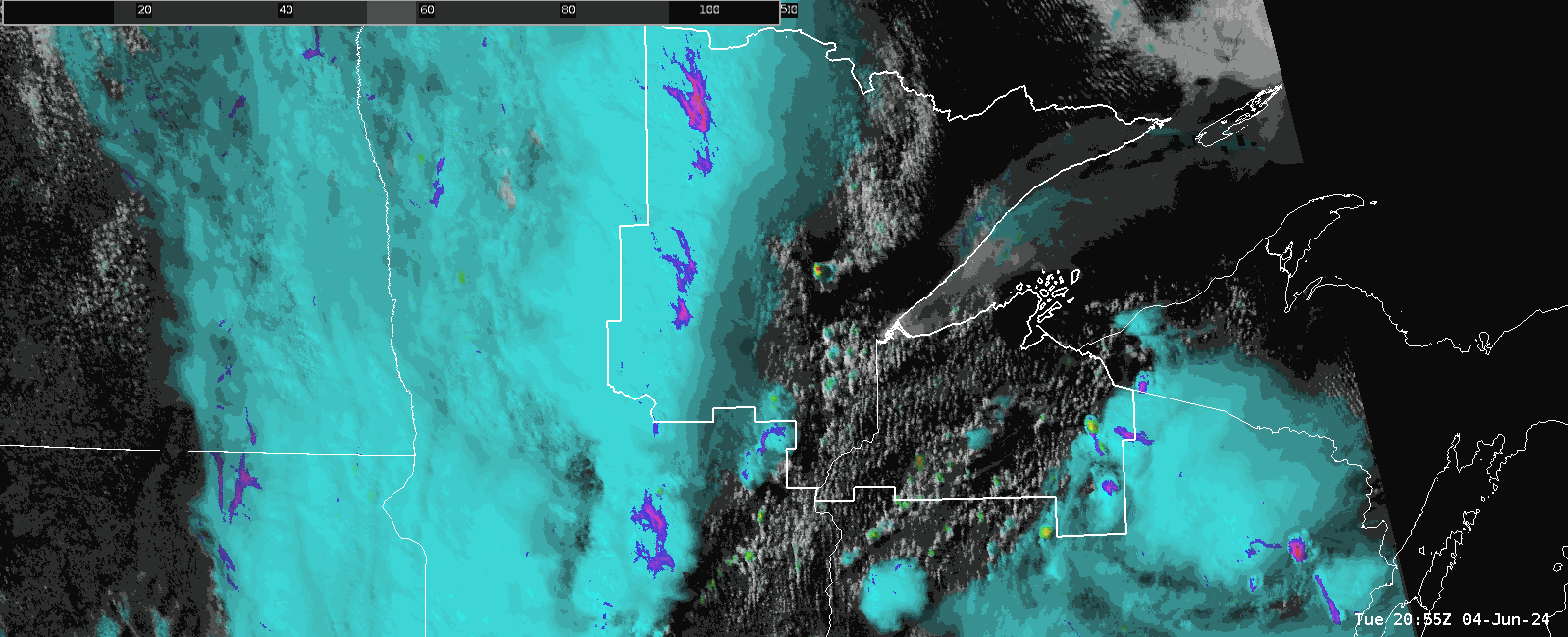
Further southeast however notice that there is stronger instability over SE portions of the CWA, thus the OCTANE product is giving you a result which coincides with where there is higher instability (higher MLCAPE – see SPC mesoanalysis).
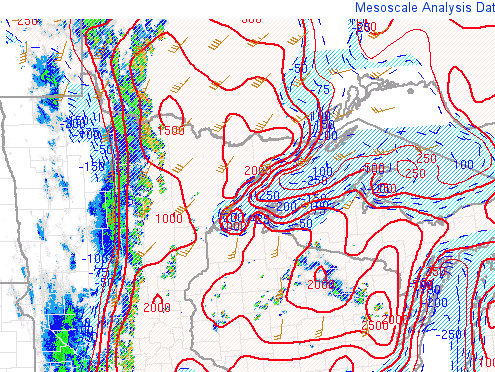
Lightning Cast continued to show high confidence of lightning over the next 60 min with the linear MCS moving into western portions of the CWA. This lead to high confidence in forecasting lightning for a DSS location (Solana State Forest) during this event.
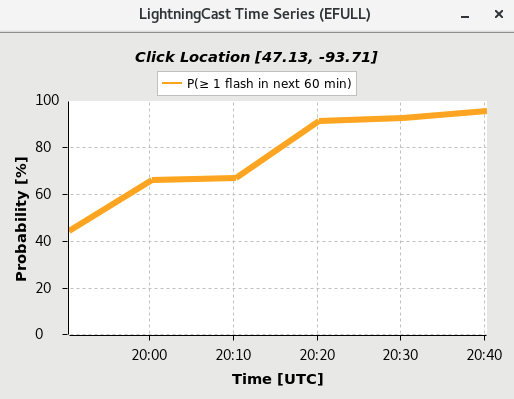
Steady behavior with the greater than or equal to 10 flashes in the next hour.
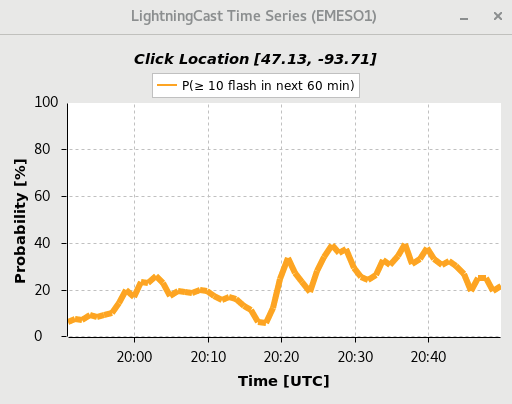
High probability of 1 flash of lightning in the next hour, increasing then holding steady
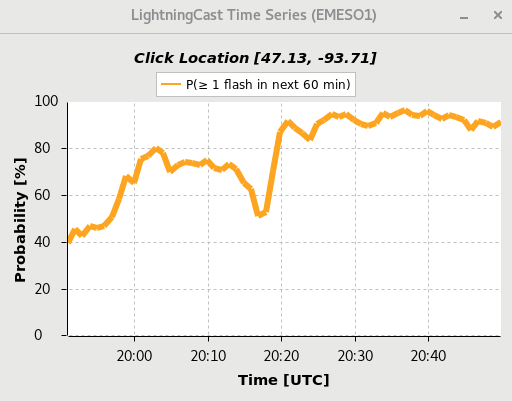
Here (below) is the Lightning Cast and GLM dashboard output comparing the forecast to the GLM flash count. Note: the dashboard was down initially but came back online
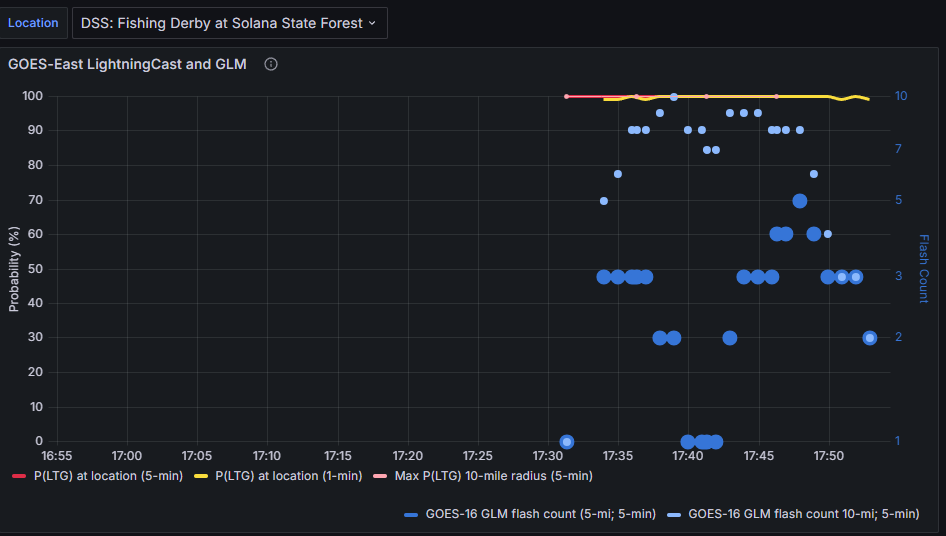
Thus we were able to give a high confidence lightning forecast for DSS.
Here is the GLM Flash Extent Density at the time of the Lightning Cast 1 hour forecast.
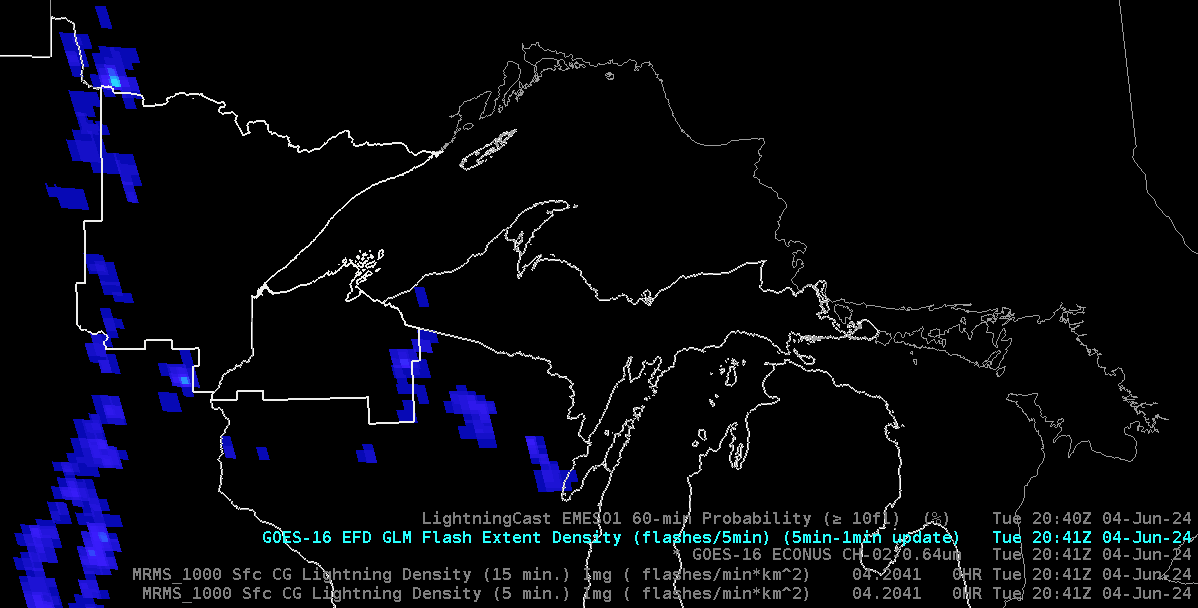
– 5454wx











